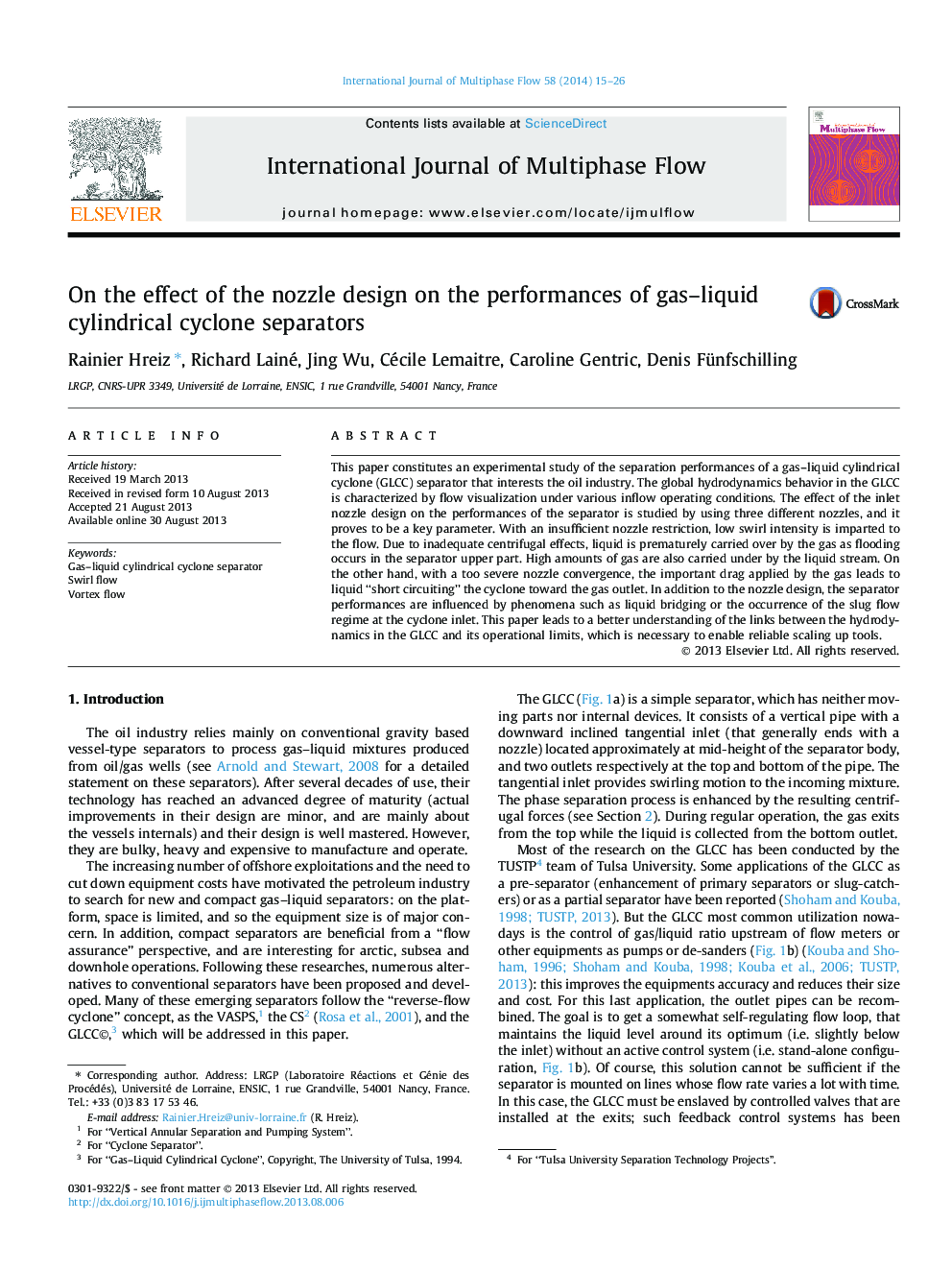| Article ID | Journal | Published Year | Pages | File Type |
|---|---|---|---|---|
| 667233 | International Journal of Multiphase Flow | 2014 | 12 Pages |
Abstract
This paper constitutes an experimental study of the separation performances of a gas-liquid cylindrical cyclone (GLCC) separator that interests the oil industry. The global hydrodynamics behavior in the GLCC is characterized by flow visualization under various inflow operating conditions. The effect of the inlet nozzle design on the performances of the separator is studied by using three different nozzles, and it proves to be a key parameter. With an insufficient nozzle restriction, low swirl intensity is imparted to the flow. Due to inadequate centrifugal effects, liquid is prematurely carried over by the gas as flooding occurs in the separator upper part. High amounts of gas are also carried under by the liquid stream. On the other hand, with a too severe nozzle convergence, the important drag applied by the gas leads to liquid “short circuiting” the cyclone toward the gas outlet. In addition to the nozzle design, the separator performances are influenced by phenomena such as liquid bridging or the occurrence of the slug flow regime at the cyclone inlet. This paper leads to a better understanding of the links between the hydrodynamics in the GLCC and its operational limits, which is necessary to enable reliable scaling up tools.
Keywords
Related Topics
Physical Sciences and Engineering
Chemical Engineering
Fluid Flow and Transfer Processes
Authors
Rainier Hreiz, Richard Lainé, Jing Wu, Cécile Lemaitre, Caroline Gentric, Denis Fünfschilling,
